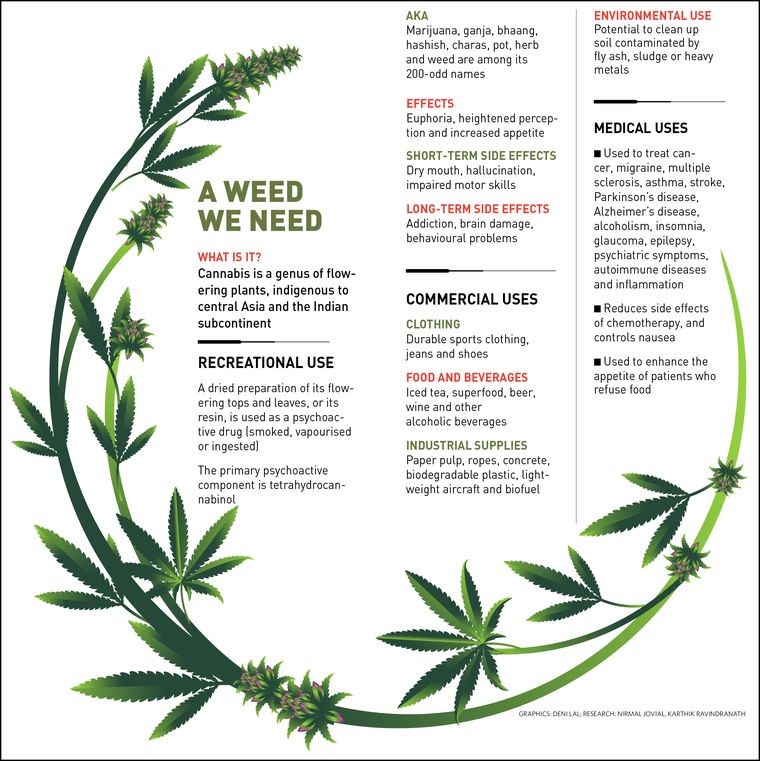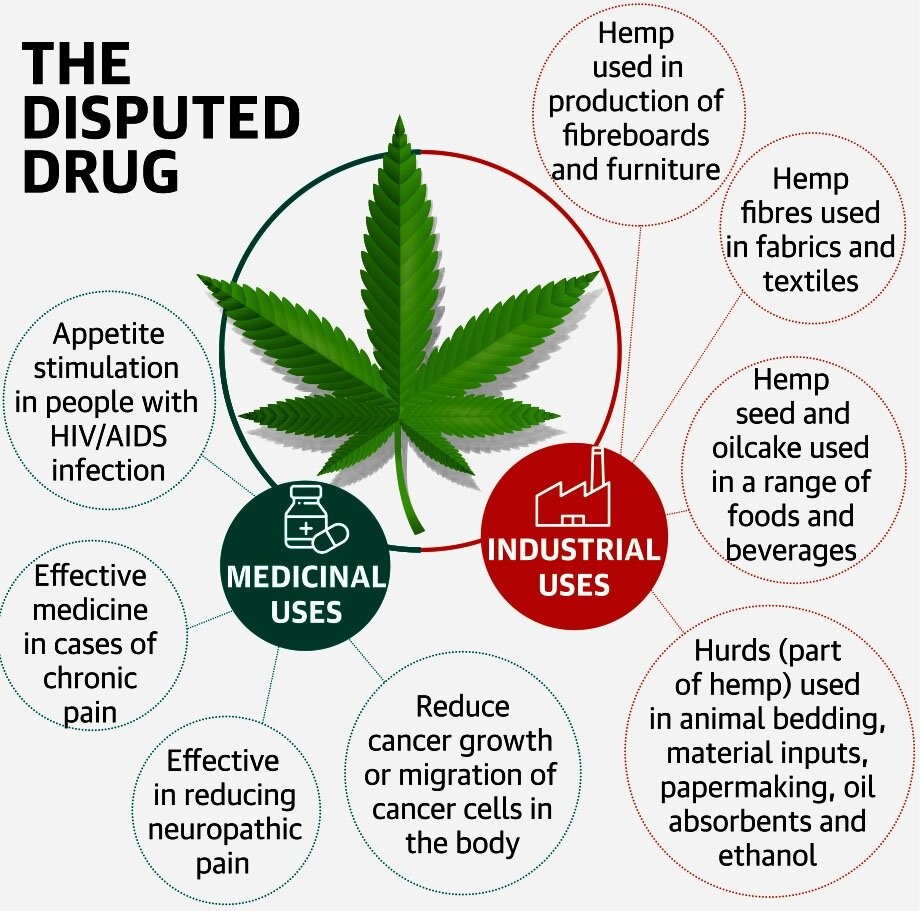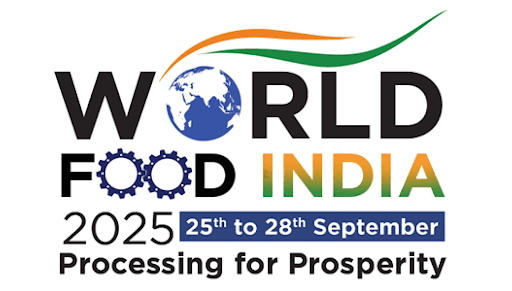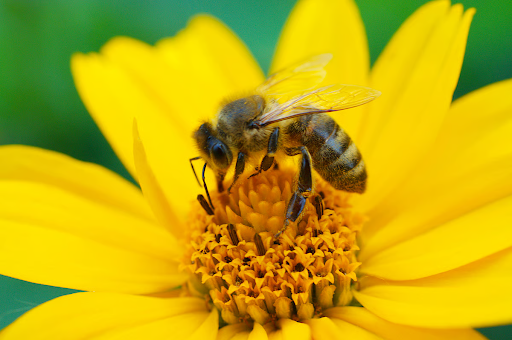
Disclaimer: Copyright infringement not intended.
Context
- The state government of Himachal Pradesh is considering the legalisation of cannabis cultivation.

Laws pertaining to Cannabis in India
- The Centre’s law around cannabis in India can be found in the Narcotics Drugs and Psychotropic Substances Act, 1985(though there are various states that have their own laws around cannabis as well).
- The law prohibits and criminalises the sale, possession, transportation and cultivation of cannabis in certain forms in India.
- The NDPS Act, when it comes to cannabis, includes:
- Charas, which is “the separated resin, in whatever form, whether crude or purified, obtained from the cannabis plant and also includes concentrated preparation and resin known as hashish oil or liquid hashish”.
- Ganja, “the flowering or fruiting tops of the cannabis plant (excluding the seeds and leaves when not accompanied by the tops)”.
- And “any mixture, with or without any neutral material, of any of the above forms of cannabis or any drink prepared therefrom”.
- Notably, the Act specifically prohibits the sale and production of cannabis resin and flowers, while the use of seeds and leaves is allowed.
- Apart from the NDPS Act, states have the power to draft their own laws on cannabis.
- Section 10 of the NDPS Act allows states to permit and regulate “the cultivation of any cannabis plant, production, manufacture, possession, transport, import inter-State, export inter-State, sale, purchase consumption or use of cannabis (excluding charas)”.
- For example, Uttarakhand became the first state in India to allow commercial cultivation of hemp in 2018. Another state law is the Assam Ganja and Bhang Prohibition Act which outlaws the purchase, consumption and possession of ganja as well as bhang.
Penalties and Punishments
- Section 20 of the NDPS Act talks about the punishment for manufacturing, possessing, selling, purchasing, transporting, importing and exporting inter-state or using the manufactured drug or any preparation containing any manufactured drug.
- For contravention involving a small quantity, there is rigorous imprisonment for a term that may extend to six months or a fine that may extend to Rs 10,000, or both.
- If it involves a quantity less than commercial quantity but greater than a small quantity, rigorous imprisonment may extend to 10 years with a fine that may extend to Rs 1 lakh.
- For cases involving commercial quantities, rigorous imprisonment will not be less than 10 years, but may extend to 20 years. A fine of not less than Rs 1 lakh (which can be extended to two lakhs) may also be levied.
- For cannabis and cannabis resin (charas and hashish) small quantities to commercial quantities is defined as 100 grams to one kilogram.
- Additionally, the Juvenile Justice Act provides separate rules for minors found in possession, consuming or selling cannabis. So, those below 18 cannot be prosecuted under the NDPS Act.
.jpeg)
Exemptions
- Bhang, which is made using the leaves of the cannabis plant, has close ties to the worship of Shiva in Hinduism as well as the celebration of the festival Holi across India in the form of a drink called ‘thandai’. The sale and consumption of bhang is permitted under law in India due to the NDPS Act’s definition of cannabis.
- While the NDPS Act prohibits the sale and production of cannabis resin and flowers, the use of seeds and leaves is allowed.
- Further, section 14 of the Act makes a “special provision” for cannabis, where the government may allow cultivation of a cannabis plant “for industrial purposes only of obtaining fibre or seed or for horticultural purposes.”
In India, cannabis is illegal for recreational use under a law passed in 1985 after prolonged pressure by the international community, and particularly the US.
Beginning in 2013, startups and business ventures have worked with the government to open up an industry and legal production, but though they were able to make some progress, there is still virtually no legal cannabis grown in India.
The medical ground of cannabis cultivation
- The active ingredient of cannabis is Tetrahydrocannabinol.
- It has a large number of uses to treat diseases like neurological diseases including Alzheimer, multiple sclerosis, epilepsy and also to deal with cancerous diseases.
Medical uses of marijuana
- Medical cannabis is most frequently administered either by smoking or vaporization or in the form of edible preparations.
- Clinical trials have reportedly suggested that cannabis may be useful in the management of a variety of conditions, including pain, spasticity, nausea, anorexia, and seizures.

Cannabis cultivation in India
- In 2017, Uttarakhand became the first state to legalise cannabis cultivation.
- Controlled cultivation is permissible in some districts of Gujarat, Madhya Pradesh and Uttar Pradesh.
- The ministry of AYUSH (Ayurveda, Yoga & Naturopathy, Unani, Siddha and Homeopathy) allows licensed practitioners as well as medical doctors to prescribe cannabis extract. However, it must be administered in compounds including other elements, as cannabis by itself is classified as a toxic, though medically important, substance.
Arguments in favour of Cannabis legalisation
Elimination of illegal trade
- India has an enormous black market for the sale of marijuana in the country. Legalisation or decriminalisation of the trade would ensure that the government earns taxes, farmers, and retailers develop a new source of income. With regulations, everyone would be better off except for the drug dealers.
Safer and cheaper than alcohol and tobacco
- While marijuana is known to have side effects, it is an established fact that limited consumption of marijuana does not have severe side-effects. Besides, excess consumption of anything would have an adverse impact.
- Tobacco is more addictive and lethal than marijuana but it remains legalised in the country. It is an established fact that stoners tend to remain calm, unlike alcoholics who often engage in rash driving or violent acts. Medical research also suggests that marijuana is not as harmful as alcohol is.
Marijuana addiction is scarce
- Studies reveal that dependence of tobacco, alcohol and cocaine users stood at 32%, 15%, and 16% respectively. Among the users of marijuana, only 9 per cent of the users became clinically dependent on the use. Limited or controlled use of marijuana could also restrict the development of an addiction.
Creation of job opportunities
- Legalisation or decriminalisation of marijuana in India would generate employment opportunities. Currently, the market is governed by illegal drug traders. Their sales and quality are not regulated.
- Once the product gets rid of the illegal tag, it would be subjected to regulation. Its manufacture, processing, transportation and sale would require manpower and vehicles. The same would generate employment. Given the scale of consumption, it has the potential to generate employment in all parts of the country.

Taxation would generate government revenue
- Currently, the traders charge high amounts from marijuana users, since it is sold illegally. The money goes in their pockets and never makes it to the government because the entire process happens in the black market.
- 500 economists led by Nobel Prize winner Milton Friedman wrote an open letter to Geroge Bush, the erstwhile President of the US, calling out for legalisation of and taxation on marijuana, similar to other goods.
Medical benefits of marijuana
- As stated earlier, there is considerable proof to show that marijuana has medicinal properties, capable of treating cancers, improving metabolism, creating appetite and curing several other physical and mental diseases. It releases dopamine, which makes a person euphoric and calm. It provides a peaceful mental atmosphere to the user.
Assistance to locals
- Himachal Pradesh and Tamil Nadu are the go-to places for marijuana in India. Tourists especially visit those places to consume the marijuana produced in those regions. The fact is commonly known to a majority of the people in the country.
- However, the illegal status of marijuana deprives the farmers of their much-deserved earnings because drug dealers offer them very cheap prices for marijuana and the local police warns them against destroying the cultivation as well. In the presence of common knowledge, it would be beneficial to the farmers to have a safe and uniform source of an appropriate income.
Improvement of quality
- Without legalisation, marijuana would still be sold to consumers. At present, consumers buy whatever the dealers sell to them. With proper regulations, a systematic approach would follow with a surety of quality products.
- In the absence of regulations, dealers often mix psychoactive drugs like weed and hash with hard drugs like afeem to enhance the effect of the product. Besides, such hard drugs are addictive to a manifold as compared to marijuana. Therefore, the regulation of marijuana becomes a necessity.

Myths about marijuana
- A popular belief is that marijuana overdose could kill a person. Dr Paul Hornby stated that a person could only overdose on THC after smoking 15,000 marijuana joints within 20 minutes.
- The withdrawal symptoms of marijuana are minimal. As a matter of fact, they are considerably meagre as compared to the withdrawal symptoms of tobacco.
The marijuana prohibition is a massive failure in India
- Apparently, hash and opium are produced in multiples of tens of thousands in Himachal Pradesh annually. Not more than 500 kgs are seized from the State every month.
- Reports suggest that more than 1600 hectares of land foster cannabis cultivation. The rate of cannabis consumption has been witnessing a rise since always. Marijuana consumption is becoming popular among the youth, and early teenagers are engaging in the use as well. Without any rules, they could procure marijuana from drug dealers without any age identification.
- The NDPS Act was implemented in 1986. It has been more than 3 decades but the country has only witnessed an increase in the consumption of marijuana. It indicates the failure of the State machinery to implement the Act. Regulations would protect young children who indulge in marijuana consumption out of peer pressure and end up doing regrettable acts.
- Medicines for mental diseases are only sold on prescription in India. The similar practice could be adopted to enforce the sale of marijuana in the country. It is a popular belief that marijuana, hashish and bhang were wrongly clubbed with hard drugs like heroin and cocaine. Since all these are defined together, the punishment for violation of the NDPS Act is 10 years of jail. As a consequence of the law and its punishment, people who refrained from consuming hard drugs (not marijuana) shifted to stronger substances because the consumption of either of the substances attracts the same punishment. So, if one knew that they could be punished, they might as well be punished after consuming everything they can.
Important Stats
- In a survey conducted by the Ministry of Social Justice and Empowerment in 2019, it was revealed that 2.83 per cent of Indians were users of cannabis. A study by German data firm named ABCD found that Delhi and Mumbai are home to the third and sixth largest cannabis consumer base in the world, with 38.2 tonnes and 32.4 tonnes of cannabis consumption respectively. Further, the UNODC’s World Drug Report, 2016highlighted that the cost of cannabis in India is one of the lowest in the world at USD 0.10 per gram.
- India and the US have contrasting views on the use of marijuana and the same reflected on their drug policies. In the 1940s, most of the States in the US had banned all narcotics drugs. India, on the other hand, had a more pragmatic approach towards the same. India focused on hard drugs like opium. In 1893, the Indian hemp drug commission hailed cannabis for its properties that caused mild euphoria and pleasant relaxation to its users. Instead of addressing it as an addiction, it was appraised by the commission.

Arguments against legalisation
Dependency Disorders
- The International Classification of Diseases and Diagnostic and Statistical Manual of Mental Disorders has classified cannabis as an addictive substance, capable of causing dependency disorders. While the supporters of marijuana claim that ‘only’ nine per cent of marijuana users become clinically dependent on the substance, the opposers use the same figure to substantiate the existence of clinical dependency on the drug.
Withdrawal Symptoms
- There is considerable emphasis on withdrawal symptoms of marijuana which include irritability, sleeping issues and dysphoria. For the users who try to quit the consumption, only 71 per cent of those succeed in quitting.
Insufficient studies to claim benefits
- The NDPS Act was a result of an elongated international pressure driven by the UN’s Single Convention on Narcotic Drugs, 1961. There exists no statistical proof to verify the significance of cannabis over regularly available drugs.
- It is admitted that cannabis is effective in reducing pain, but it is less safe than the approved opiates.
- The effects of marijuana on extreme forms of epilepsy and multiple sclerosis are positive. But there still exists a loophole because sufficient studies have not been conducted to substantiate the claim. While the claims of positive impact remain sceptical, it is established that marijuana poses a great threat of adverse effects.
Psychotic disorders
- Marijuana users are at a greater risk of being diagnosed with chronic psychotic disorders including schizophrenia.
- Marijuana addicts often show impaired neural connectivity. The opposers argue that smoking marijuana increases the risk of bronchitis and pneumonia.
- Studies suggest that it also causes lung cancer and an increment in the chances of being diagnosed with other cancers.

Misuse
- India has seen the misuse of prescription drugs in the country. For medical purposes, weak opiates are easily accessible alternatives to marijuana.
- There are several painkillers which are effective in the alleviation of pain. They might have their side effects, but so does marijuana. Government has also permitted the use of marijuana for medical research, so legalisation is not a ‘necessity’ as such.
- In a country where even prescription drugs are misused, a serious question is raised on the regulation of cannabis in case of legalisation.
Legalisation of cannabis would exacerbate toxic substances
- India is battling with the other toxic substances like alcohol, tobacco and areca nuts already.
- According to the Global Adult Tobacco Survey, 1.35 million Indians die of tobacco use every year.
- The legalisation of cannabis would only add to the count, instead of decreasing it.
Closing Remarks
- The potential risks that cannabis pose illustrate why it is our duty to legally regulate this drug. Rather than leaving the trade of cannabis in the hands of an unregulated criminal market, the drug should be safely produced by competent farmers, packaged and tested in suitable facilities, and sold by reputable and licensed vendors.
- Regulation is not only beneficial for people who want to use cannabis safely; it also enhances security for all of society, as it helps undermine criminal markets. Due to the drug’s illegality, cannabis sales currently line the pockets of various characters in a vast criminal underworld, some of whom may be committing far more nefarious crimes.
- The international prohibition of cannabis has failed in every country that has attempted to implement it. Instead of stopping drug use, cannabis prohibition has fuelled violence and criminality, increased health harms, and cost society an exorbitant and immeasurable sum of money.
- Now, as Canada, Uruguay, and several US states end cannabis prohibition and begin to legally regulate the drug, India must take notice.
It’s high time for India to embrace the health, business, and broader societal benefits that legally regulating cannabis can bring.
|
PRACTICE QUESTION
Q. The international prohibition of cannabis has failed in every country that has attempted to implement it. It’s high time for India to embrace the health, business, and broader societal benefits that legally regulating cannabis can bring.
|
.jpg)
https://www.timesnownews.com/mirror-now/in-focus/explained-himachal-pradesh-to-legalise-cannabis-cultivation-medical-marijuana-in-india-its-uses-the-story-so-far-article-99341083











